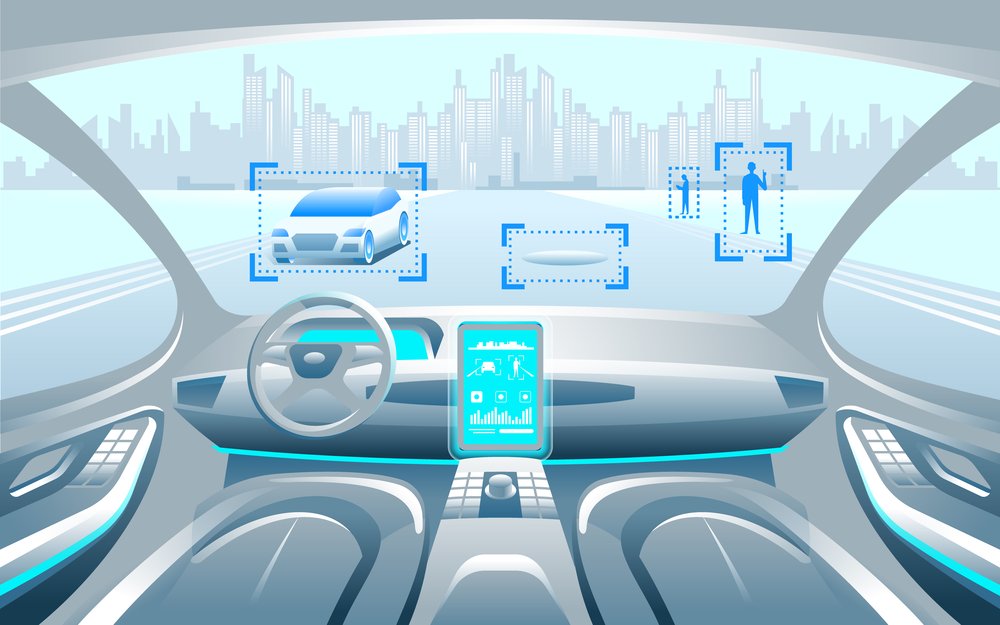
Automakers with a forward-thinking mindset are offering autonomous driving as more than simply a flashy feature. Instead, the development of autonomous vehicles (AVs) promises to boost mobility, reduce transportation costs, and increase production. Each of these has a possible impact on our economy.
However, it has proven to be far more difficult than anticipated to bring autonomous driving to market. There are doubts about whether self-driving cars can even become a reality due to the industry’s inability to meet aggressive AV development timetables. That remark, however, might not be entirely accurate.
What advantages do autonomous vehicles offer?
The primary selling point for autonomous driving has been enabling safety. Humans are often careless drivers. According to a survey by Esurance, 77 percent of drivers have been in at least one collision, and the likelihood of being involved in one on a 1,000-mile trip is one in 366!
According to the National Highway Traffic Safety Administration, car accidents caused a US$340 billion economic loss to the United States in 2019. And of all the workplace fatality rates, the Bureau of Labor Statistics found that truck transportation was one of the most hazardous, with 27 fatalities per 100,000 full-time employees — a rate almost nine times the average for workplaces.
One of the many economic advantages of autonomous driving is increased safety. Others include:
- Savings on labour: The trucking business has been plagued by a persistent scarcity of drivers, which has increased costs and prolonged delivery times. A younger workforce is not filling the gaps as the driving population matures. As demand increases following the outbreak, Uber and Lyft are also experiencing driver scarcity. These shortages are exacerbated by indirect factors, such as gas prices. To allow society to benefit from these ridesharing services over the long run, an autonomous model must be considered to allow these companies to operate efficiently and save on labour costs.
- Greater mobility access: People who are unable to drive due to physical limitations, poor health, or advanced age can nevertheless access transportation thanks to AVs, giving them freedom of mobility and the ability to live independently.
- Reduced opportunity costs: Humans lose valuable time when on the road, whether they are driving children, performing errands, or commuting to work. People can use the time spent driving more efficiently with the adoption of AVs.
When will AVs make a difference in the economy?
When will AVs become widely used is a question that is prompted by the potential of autonomous driving. They already have, is the response. Although many people could compare AVs to personal vehicles, the AV market is not uniform. Several sectors of the drive towards autonomy are making significant progress, each with its own difficulties and advantages economically.
To begin with, autonomous vehicles are now used in agriculture, home delivery, and warehouse management. Robo-taxis and shuttles are currently in trial stage, carrying passengers in select cities and conditions. Long-distance self-driving trucks are emerging with a higher degree of autonomy than before, which will lead to increased productivity.
A report from McKinsey revealed that autonomous trucks increase their individual operation time from 11 to 20 hours. The increased time on the road will lead to faster shipping times leading to higher shipping capacity and efficiency. All of these facts point to the shift that is currently being undergone by society to realize the economic benefits of autonomous transportation.
Making AVs safer than cars driven by humans
With varying situations and degrees of attention span, drivers are prone to making mistakes while on the road. They make errors when driving as a result of distraction, exhaustion, or intoxication. On the other hand, they are able to recognize and respond to unforeseen issues in circumstances that are challenging for AI-trained systems to comprehend and manage.
Making AVs achieve their primary objective of facilitating safer transportation is a challenging and expensive undertaking. The industry has undertaken IPOs, facilitated significant private investments, and integrated businesses and resources through mergers and acquisitions.
However, there is still room for improvement in the fundamental perception technologies that give autonomous cars the ability to comprehend their environments. A network of suppliers, researchers, investors, and manufacturers working together will allow AVs to realize their full potential.
This ecosystem will be fueled by innovative early-stage firms that will bring new technologies (ranging from sensors to processors) to the table. To enable safe and efficient driving needed for the widespread adoption of autonomous vehicles, AI perception processors must be purpose-built with both extremely high compute power and energy efficiency.
Only then will society be able to capitalize on the economic gains that come with self-driving vehicles.
Sidhart Krishnamurthi is a product manager at Recogni. Before Recogni, he held roles in marketing and business development at Proofpoint and StriVR.












Leave a Reply